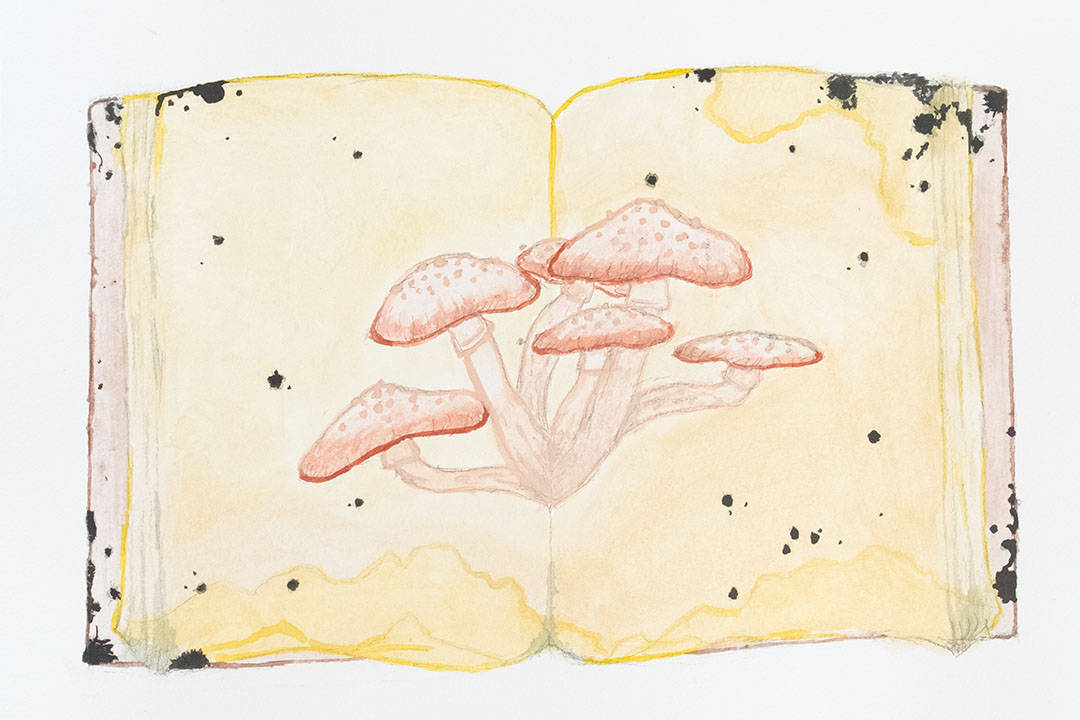Warning: Spoilers ahead!
In an ancient dwelling overrun with mould and rigid principles, Noemí Tabaoda experiences the fear of fungi at full force. Silvia Moreno-Garcia’s 2020 gothic horror novel follows the young socialite’s visit to her newlywed cousin in the Mexican countryside. Set in the 1950s, the story unfolds as Noemí is swallowed by the darkness of High Place, the mysterious house her new in-laws — the Doyles — inhabit.
High Place: A living ruin
The chilling tale takes place in a decrepit house that displays all the traits of an abandoned mansion but remains inhabited by both the Doyle family and a smaller evil: mould. Mould pervades High Place in black spots found in the pages of the library books, in the fungus clinging to the statues in the garden, and in the wallpaper plastered in Noemí’s room. It’s like the house was flooded and left to rot for decades. When Noemí arrives, she feels as if she’s stepped back in time, when oil lamps and candles were the only light sources.
The windows are sealed shut, and the curtains are perpetually closed. The Doyles like it this way, as it’s how things are done. Their rules are not meant to be broken, but Noemí challenges them, letting the light in — though briefly. The physical darkness that High Place is shrouded in provides the perfect environment for mould and rot to set in. Combined with the constant rain and thick fog around the mountain residence, mould and mushrooms proliferate unchecked across the property.
The enduring mould
In the novel, the mould that fills the house is portrayed as decay, rot, and generally akin to the Doyles. In Noemí’s eyes, the house is a pit of darkness — unfamiliar and deceptive, like the mould that covers it.
Non-fictional mycorrhizae are fungi that grow on the roots of other plants. Both the fungus and the host plant benefit from this symbiotic relationship. The mould provides more access to nutrients to plants, and in return, the mould receives photosynthesized carbs that it cannot get from the sun.
The mould in High Place is different. The mildew is closer to black mould, a toxic household problem. The effects of this type of mould can persist and reappear long after the source is extinguished. The Doyle family has lived in the same house for generations — and as it turns out, Howard Doyle, the patriarch, has also held on for generations.
A supporter of eugenics, he believed that his ‘blood’ was superior to the locals. When he discovers a fungus in Mexico that grants him superhuman longevity, he exploits it and learns that, through sacrifice and cannibalism, he can be immortal. This fungus is referred to throughout the novel as ‘the gloom.’
The symbiotic relationship the Doyles have with the fungus is sinister. In exchange for immortality, Howard willingly feeds his own children to ‘the gloom,’ allowing the fungus to grow and spread from its heart in the damp basement of High Place. For someone with such twisted beliefs, it’s no surprise that he stole the fungus from the Mexican locals and used it to control them. Howard’s symbiosis with the gloom allowed him to manipulate anyone the mould touched. He abuses the fungus’ resilience and makes himself a sort of god — always watching, always keeping his descendants in the palm of his putrefying hand.
“And in the corner of the room, the mold was beating like a heart”
He ‘haunts’ High Place, never allowing his blood to rest. The gloom holds the memories of everyone who has died in the house. It’s sentient and allows Howard to control everyone that the mould infects, whether they ingest it by accident or simply by breathing the air in High Place. It weakens Noemí, confuses her memories, and pushes her to believe she’s losing her mind the longer she’s in the house.
While exaggerated in the novel, these are all real long-term effects of toxic mould exposure. Memory loss, anxiety, confusion, depression, and constant fatigue are all issues that can persist for years after mould exposure.
The plot thickens, or is it decay?
As a huge fan of horror fiction, getting lost in Mexican Gothic felt unavoidable. The constant imagery of mushrooms and black mould drove the feeling that something bigger was involved beyond the members of the cold Doyle family. Our protagonist is trapped in a dark, mould-infested house, and though the gloom drives deeper into her psyche and body, she never stops fighting. Noemí is resilient, ironically enough, like mould.
She uncovers the history and every nauseating secret of High Place. The dark spores that line the walls and her dreams of golden mushrooms tell her the past.
It makes sense that toward the end, more mushrooms appear than mould. Mushrooms and mould are both adaptive, but mushrooms hold a brighter outlook. Often found sprouting from deceased organisms, they represent new beginnings.



No comments to display.